By Lindsay Steinbauer
Winter is here and you know what that means – howling wind and frigid snow! Each year, as the days get shorter, the temperatures drop, making survival more difficult for our local native plant species. This means that only those plants that are specially adapted to such harsh climate extremes will live to see another year. Here in the Flathead, we have many such species. I’ll discuss a few of them and the strategies they use for survival.
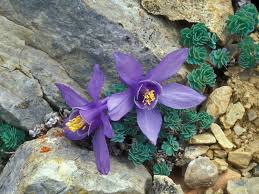 Many plants go into a state of dormancy during the winter in order to skip over the winter months, when water is not as readily available due to the consistently frozen temperatures. Some of these, such as Jones Columbine (Aquilegia jonesii), may live to be over one hundred years old, due to their ability to conserve energy when its needed most. Coniferous trees (i.e. Subalpine Fir (Abies lasiocarpa), Ponderosa Pine (Pinus ponderosa) and Western Hemlock (Tsuga heterophylla) use their needles to conserve the water that they have accumulated over the course of the year. And many forbs (wildflowers) die back to their roots, which are much hardier than their leaves and branches and will provide a strong foundation for growth in the spring. Some shrubs, such as Sitka Alder (Alnus viridis) and Buffaloberry (Shepherdia canadensis) actually put buds out in the fall in order to take advantage of the short growing season at high altitudes. This readies them to sprout as soon as temperatures rise to their trigger point.
Many plants go into a state of dormancy during the winter in order to skip over the winter months, when water is not as readily available due to the consistently frozen temperatures. Some of these, such as Jones Columbine (Aquilegia jonesii), may live to be over one hundred years old, due to their ability to conserve energy when its needed most. Coniferous trees (i.e. Subalpine Fir (Abies lasiocarpa), Ponderosa Pine (Pinus ponderosa) and Western Hemlock (Tsuga heterophylla) use their needles to conserve the water that they have accumulated over the course of the year. And many forbs (wildflowers) die back to their roots, which are much hardier than their leaves and branches and will provide a strong foundation for growth in the spring. Some shrubs, such as Sitka Alder (Alnus viridis) and Buffaloberry (Shepherdia canadensis) actually put buds out in the fall in order to take advantage of the short growing season at high altitudes. This readies them to sprout as soon as temperatures rise to their trigger point.
Many of the low-growing, shrubby native plants in Glacier do very well in the winter months due to their ability to avoid harsh winds. Arctic Willow (Salix arctica) is one of them and has been so successful on mountain passes and in the tundra that its range extends as far north as any plant species on the planet. This tiny willow species is so well-adapted that it actually PREFERS cold climates! Besides growing in low bunches, it also has shallow roots, which make it easier to grow in infertile, permafrost soils and has hairy leaves to keep it warm. Another low shrub (which is one of our most common plants), Kinnikinnick or Bearberry (Arctostaphylos uva-ursi) can thrive in cold temperatures with its thick, woody stems, and hairy/waxy leaves. Oh, and if YOU happen to get caught out in the cold, eat the berries of this plant to keep alert or make a tea from the roots to soothe your cough!
Other plants that keep their berries throughout the winter include Western Mountain Ash (Sorbus scopulina), Snowberry (Symphoricarpos albus), and Wild Rose (Rosa woodsii). This ensures that non-hibernating animals will have forage during the unforgiving winter months and also that the seeds of these plants will have a greater chance of being dispersed. Another dispersal strategy that is more commonly used is WIND. Throughout the year, this is a valuable resource and species such as Fireweed (Chamerion angustifolium) and Willows (Salix sp.) take full advantage of this by having fluffy seeds that can float on the breeze. Much like the Western Pasqueflower (Anemone patens), the Saxifrage plant grows in small, tight clusters in order to trap heat from the sun and provides nutrients back into the normally infertile soil. The Lupine (Lupinus sericeus) also enriches the soil with nutrients and prefers to grow in treeless areas.
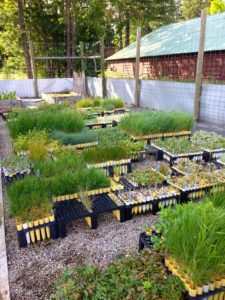 At Glacier National Park’s Native Plant Nursery, we use native plants to restore human-disturbed areas in the Park. Therefore, we must know all about the special adaptations of over 230 plant species in order to collect, grow and plant them correctly. We use Phenology charts (the study of the timing of recurring natural phenomena) to dictate our annual processes and we learn more and more about the amazing things that plants can do each year!
At Glacier National Park’s Native Plant Nursery, we use native plants to restore human-disturbed areas in the Park. Therefore, we must know all about the special adaptations of over 230 plant species in order to collect, grow and plant them correctly. We use Phenology charts (the study of the timing of recurring natural phenomena) to dictate our annual processes and we learn more and more about the amazing things that plants can do each year!

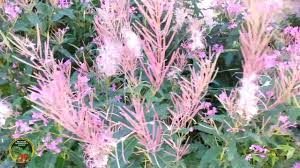
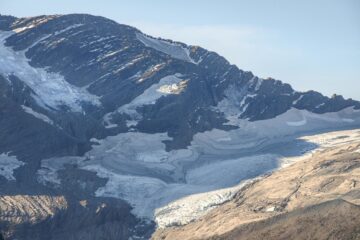
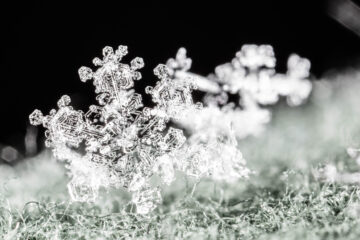
![Margaret Barr's "Strange Children" [ballet], 1955 / photographer unknown](https://flatheadcore.org/wp-content/uploads/2024/03/4944459226_e4c3f8fe5b_o-360x240.jpg)